Nexus S and Android 2.3 Review: Gingerbread for the Holidays
by Brian Klug on December 14, 2010 4:08 PM EST- Posted in
- Smartphones
- Samsung
- Nexus S
- Gingerbread
- Android 2.3
- Mobile
Near Field Communication
Note that in the previous section I didn’t pop the back off the Nexus S and show you what’s underneath. That’s because what lies beneath is relevant to something new which the Nexus S has that no other Android smartphone has quite yet - Near Field Communication (NFC). NFC in practice is similar to RFID in that it’s a contactless, short range communications protocol - the two also work using magnetic induction and a loop antenna in the 13.56 MHz ISM band. If we finally remove the back of the Nexus S, you’ll see that loop antenna almost immediately.
There are two gold pins on the back of the Nexus S, and a corresponding set of pins on a flex circuit attached to the battery cover inside. If you look closely at an angle, there’s a very clear circular raised area which is that loop antenna, just like we’re used to seeing.
The principle is simple - bring the Nexus S near a smart tag, the smartphone induces some current, and the tag sends back some data. If the phone is on and you swipe it over a smart tag, the device will read it - you don’t need to launch an application or download something like barcode scanner. In its current state, the Nexus S can read these smart tags and act on them, offering functionality similar to a QR code. Currently scanning a tag launches the Google tag reader which shows you what information was in the tag, but other applications will be able to process tags with different intents just like you can open photos and documents with certain extensions using any Android application.

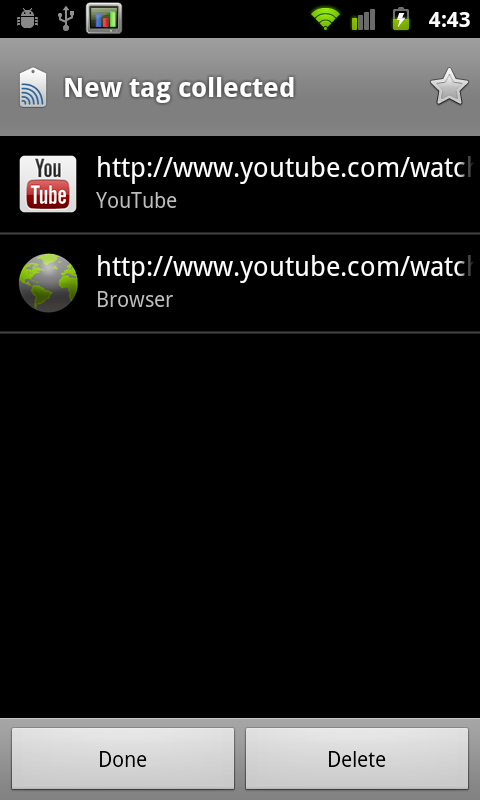
NFC right now works a lot like how QR codes do, but with a few differences. I experimented a long time ago with putting a QR code on my business card, with data in a simple vcard format. If you’ve ever tried this, you’ll quickly discover that the data you can fit on a QR code is rather limited - just under 3 kilobytes. You also have to launch an application, have some ambient illumination, and have a decent camera. QR codes are awesome, don’t get me wrong, but what NFC offers is the ability to do all of that faster, with more data (storage space is a function of the smart tag’s physical size), without launching anything. The tags themselves run around 5 to 25 cents.
But what about communicating with other devices and writing tags? That’s where NFC has the potential to be very interesting. There are three different operating modes for NFC - read/write which allows the device to read a passive smart tag, P2P mode which allows for bidirectional communication between two devices at up to 848 kilobits/s, and finally smart tag emulation, where the device acts like a passive contactless tag. The Nexus S NFC controller is NXP’s latest, the PN544, which has hardware support for all three modes. At present, Android 2.3 only supports read mode, but support for all three are coming.
Google has open sourced NXP’s controller software, and will slowly be updating the SDK with support for P2P mode and card emulation mode. At that point you can imagine applications like Bump leveraging NFC to transmit contact data between phones, using your smartphone as a mass-transit pass (buy your ticket on the phone, then use emulation mode to emulate the pass), or even a payment token.
Google sent along a sample Google Places smart tag with the Nexus S. This is the kind of tag they’ve shipped out in business kits to a number of locations in their pilot city of Portland, Oregon to help launch Google hotpot. This specific tag is big and constructed out of vinyl, but that’s purely because it’s intended to be placed in a storefront window. Other smart tags can be much smaller, like a stickers. Playing around with the tag, I couldn’t find a stiff region or trademark inflexible portion like I’m used to seeing with RFID tags.
Wave the phone over the sticker less than about five centimeters away, and it’ll read the tag. I tried through average thickness plate glass, and it worked fine. It’s insensitive to rotation, but works best when the phone is perpendicular and you couple those two loop antennas together - unsurprisingly. Reading the sample tag is nearly instant, and happens whenever the phone is on - a dialog pops up with info from the tag you’ve read. Inside tag reader is a long list of scanned tags.
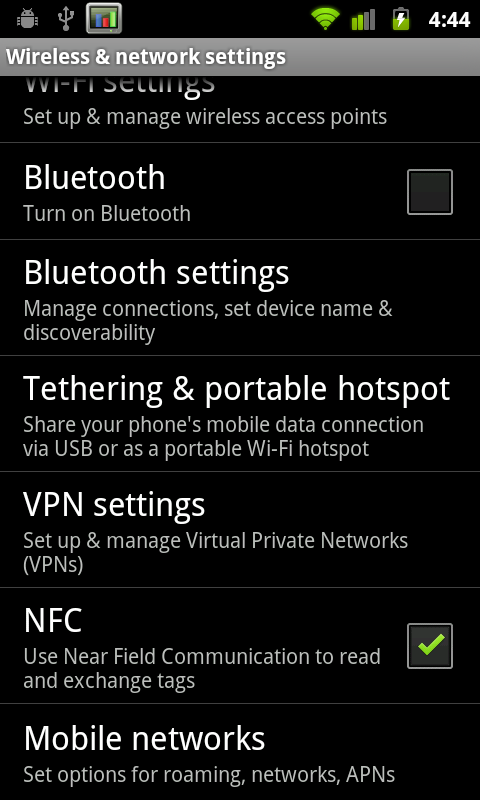
There’s a new settings option inside wireless & network settings for turning NFC on and off. Because NFC is always scanning in the background, it does use some current, but NXP’s documentation puts it at 50 microamps in power down mode with the RF detector active (ready to detect a tag), and 35 milliamps when briefly interacting with a tag. In practice, NFC shouldn’t adversely affect battery life. I haven’t had time yet, but will run our battery life tests with NFC turned on and off, but don’t expect a measurable difference. I’ve included a video of NFC reading the supplied tag in the Android 2.3 overview video on the following pages.
Though there aren’t very many NFC tags out in the wild waiting to be read yet, the same could be said for QR codes just one or two years ago. Hopefully NFC tags start cropping up, along with NFC enabled applications which use the P2P communications mode to transfer data. Of course, other device makers will have to build NFC readers into their devices as well


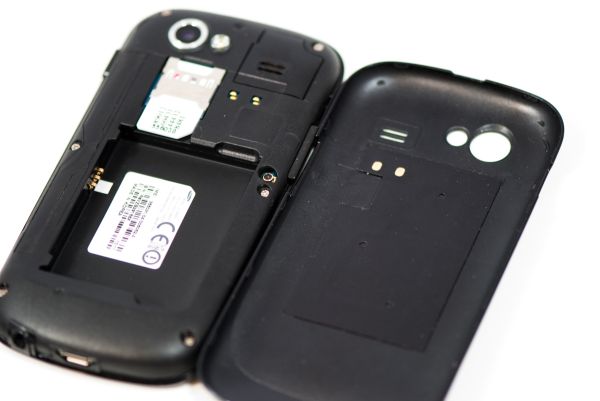
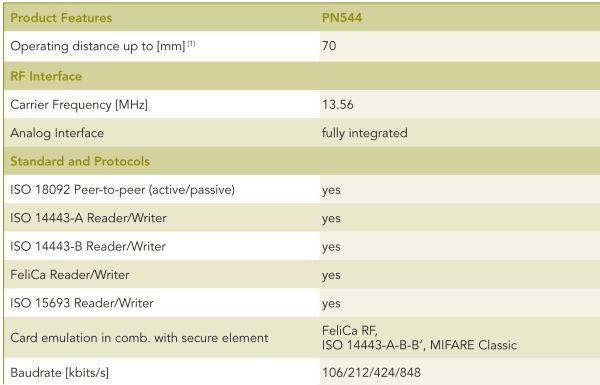
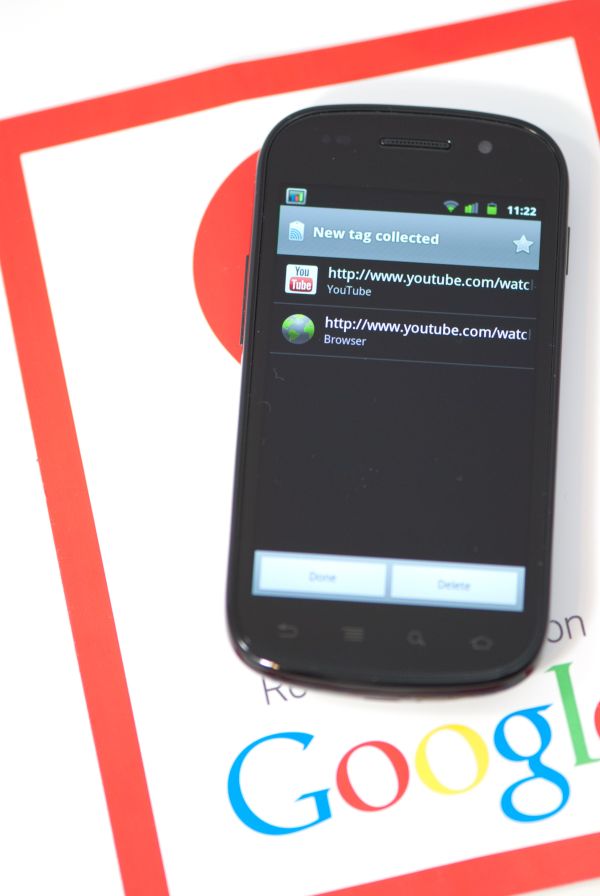








73 Comments
View All Comments
Zingam - Thursday, December 16, 2010 - link
I agree I have a nokia and the phone jack is on the top side. I have wished many times that it is on the bottomcece74 - Thursday, December 16, 2010 - link
I also miss the trackball on my Galaxy S.But I now use Swiftkey , a pretty good keyboard, and it also have arrow keys (press "123" then symbols : {&= key) to see it.
JimmiG - Thursday, December 16, 2010 - link
Basically a Galaxy S (which was basically a Nexus One with a better screen and faster GPU), with a few extra features, unlike the Nexus One which was pretty revolutionary for its time.Of course, the Nexus One isn't even a year old, which isn't such a long time.. but sometimes it feels like the N1 was released in another decade considering how fast things have moved. I hope the Nexus 3 or whatever at least as a dual-core out-of-order CPU and other improvements.
blueF - Thursday, December 16, 2010 - link
Well I purchased my Nexus S, and am very pleased with the phone. Scrolling is not as smooth as I was lead to believe, but still glad I purchased one.bobshute - Thursday, December 16, 2010 - link
Brian, are you sure on the 3G radio.The T-mobile Samsung Vibrant radio, although not advertised, is at least Quad band
It has the 1900 radio on by default for 3G on AT&T.
You can also turn on the 850 band in the service menu although it's not confirmed to work in 850 mhz only areas of AT&T coverage.
Voldenuit - Friday, December 17, 2010 - link
>Don't you usually have your phone in your pocket upside down anyway?Not if it's in the shirt pocket. Or jacket inner pocket. Or on a belt holster.
I'm a lot more likely to use a headphone with the phone in these places rather than in my pants pockets, where walking, sitting or standing up is more liable to crush/damage the headphone jack.
Inuit - Saturday, December 18, 2010 - link
A new on-screen keyboard for Android from Keypurr has directional keys, and it is in the main screen (no need to flip to another screen). I am using Keypurr on my Galaxy S - and love it!In addition, it has large keys (almost twice as large as the standard keyboard) and very clever and up-to-date dictionary. I can type on it as fast as hardware keyboard, or type one handed. It also comes in black or white skins, has function keys, and more. I think Keypurr has some good short videos on their site: www.keypurr.com
keypurrtech - Sunday, December 19, 2010 - link
Keypurr is a new Android keyboard that uses a full QWERTY layout with keys that are are almost twice the size of other onscreen QWERTY keyboards. It also has a dictionary that includes abbreviations, acronyms, and words borrowed from other languages. Best of all for Nexus S users (and anyone who's phone doesn't have a trackpad) it includes customizable function keys that can be used as directional controls.Keypurr allows users to type with greater speed, confidence, and ease, than any Android keyboard! Check out our website: www.keypurr.com or our youtube channel: www.youtube.com/keypurrtech to learn more.
teohhanhui - Monday, December 20, 2010 - link
"... people want carriers to provide first-party support for devices, and people want to play with devices in stores before making the jump ..."I wouldn't consider a carrier as the first party when it comes to providing support for phones (there is no doubt that they are the first party when it comes to network issues). As it stands, carriers are only worsening the experience by slapping on unwanted customizations and hindering roll-outs of OS updates.
What is stopping you from "playing with devices" in a retail store (either by manufacturer/OS vendor/authorized reseller)?
IMO the real reason for the prevalence of "carrier subsidies" seems to be consumers preferring to pay by installment, or simply unaware of the fact that they end up paying more in the end.
ravenfq - Tuesday, December 21, 2010 - link
I'm always disappointed to find that no reviewers mention the fact that Android doesn't support WiFi proxy 'out of the box' - any suggested solutions to this lack of functionality require that the user 'root' their device, which is not necessarily acceptable to everyone (for all sorts of reasons).This lack of functionality precludes student usage on campus, and crucially (in my opinion) any corporate in-house 'managed' usage, where any WiFI authentication is a pre-requisite.
As a CIO, I'm forced to eliminate Android-based devices from consideration as a corporate standard, and constrain my options to Apple, Microsoft and (hopefully) any upcoming HP WebOS-based devices.
This is deeply disappointing to me personally, as I applaud any attempt to separate the OS from the hardware, liberating hardware manufacturers to compete and innovate, and thus giving us, the end users, ever expanding and increasing capabilities in a portable device. I had high hopes for the relatively open Android environment in this regard.
I would also refer you to this (somewhat emotive) link that outlines the issue in more detail:
http://code.google.com/p/android/issues/detail?id=...
Thank you, Anandtech, for what is otherwise superb technical journalism.